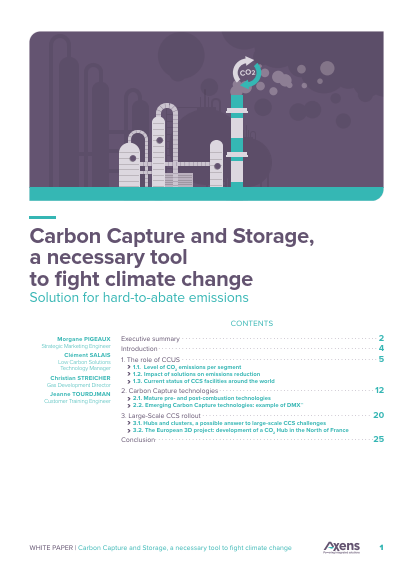
Carbon Capture, Utilization and Storage (CCUS) covers all technologies dedicated to removing CO2 from flue gas, industrial gases, natural gas and the atmosphere, recycling this CO2 for utilization (U) in chemical applications, for instance, and/or storing (S) it in geological cavities.
Carbon Capture and Storage (CCS) is a subset of CCUS, as its name suggests. Both are part of the equation for reducing GreenHouse Gas (GHG) emissions, improving energy efficiency, increasing renewables use and promoting a fuel switch.
Anthropogenic GHG emissions, need to be reduced drastically to meet the targets of the 2015 Paris Agreement, which are currently being tightened to limit the rise in temperature this century. Since CCS has a vital role to play in all the anticipated scenarios, the development of CCS projects is growing significantly worldwide, but not quickly enough.
Clearly, CCS is expected to show a significant contribution to achieving net-zero emissions around the mid-century mark by removing emissions from industries that are hard to decarbonize.
› Level of CO₂ emissions per segment
› Impact of solutions on emissions reduction
› Current status of CCS facilities around the world
› Mature pre- and post-combustion technologies
› Emerging CO₂ capture technologies
› Hubs & clusters, a possible answer to large-scale CCS challenge
› The European 3D project
This paper provides an introduction to the role of CCUS, and its impact on emissions reduction.
The dominant two carbon capture technologies, pre- and post-combustion, are introduced along with new, more cost-effective solutions.
The paper concludes with some hints on the way forward for large-scale CCS rollout.